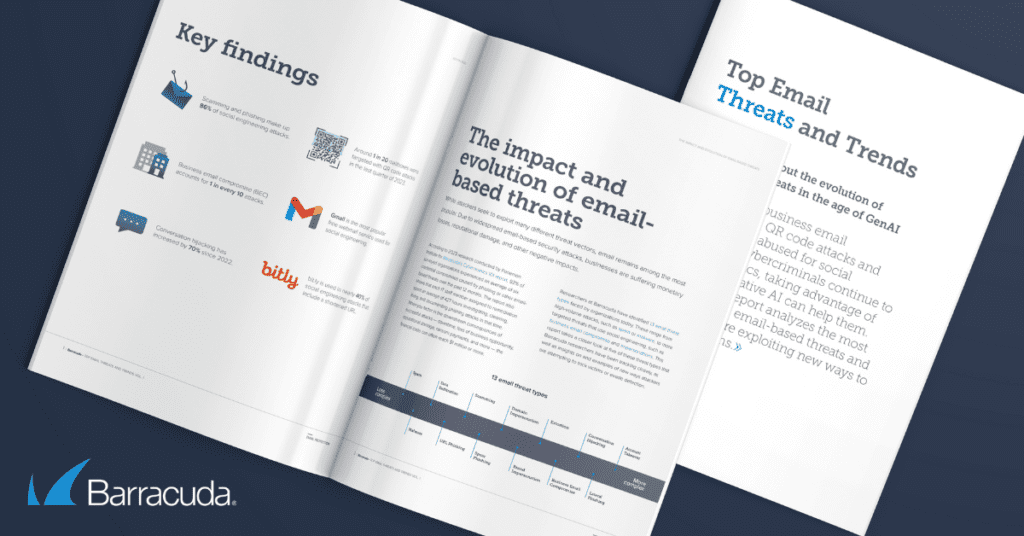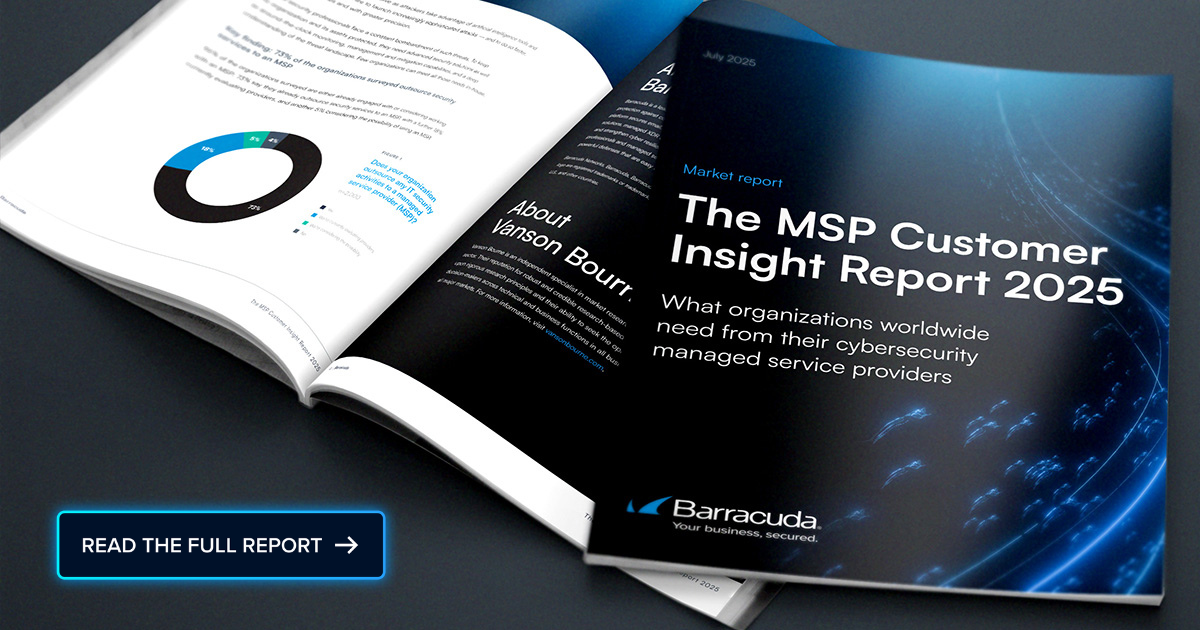
 Attacks are getting more sophisticated, and organizations need a fresh approach. The email threat landscape is evolving fast. From sophisticated phishing attacks to business email compromise (BEC) attacks, bad actors continually find new ways to outsmart existing defenses. For businesses that focus mostly on threat prevention, this presents a critical challenge— one that requires a fresh approach and modern email security solutions.
Attacks are getting more sophisticated, and organizations need a fresh approach. The email threat landscape is evolving fast. From sophisticated phishing attacks to business email compromise (BEC) attacks, bad actors continually find new ways to outsmart existing defenses. For businesses that focus mostly on threat prevention, this presents a critical challenge— one that requires a fresh approach and modern email security solutions.
Barracuda has been defending email systems with our award-winning protection for over twenty years. At Barracuda, we’re proud to announce the launch of our new email protection plans. These plans redefine what it means to secure your organization’s email by delivering comprehensive pre- and post-delivery protection alongside Domain-based Message Authentication, Reporting, and Conformance (DMARC) reporting—a truly unique and competitive offering in the market. We will explore these features in-depth over the next several weeks. First, let’s review the importance of these changes.
The evolving email security landscape
The FBI’s Internet Crime Complaint Center (IC3) reported business email compromise (BEC) scams in 2023 resulted in adjusted losses exceeding $2.9 billion, up from $2.7 billion in 2022. Fraud schemes like this caused losses of $4.57 billion in 2023, which was a 38% increase over 2022.
Most organizations rely on email security that focuses on blocking threats before they reach users. Tools like spam filters, malware scanners, and more recently AI-powered email security are essential for stopping the majority of attacks, including BEC. However, even the best threat prevention tools are not able to prevent 100% of attacks.
When threats slip past defenses, understaffed security teams often struggle with manual incident response, leaving organizations exposed to the risk of further compromise. This gap highlights the importance of automated incident response. By quickly identifying and neutralizing post-delivery threats, automated incident response ensures your organization is protected against the entire spectrum of attacks – even those that evade threat prevention tools. And because it’s automated, your IT team can focus on proactive remediation, rather than reactive cleanup work that can be performed by AI.
Already existing threat prevention tools can be strengthened further with email authentication and DMARC reporting in particular. DMARC reporting plays a crucial role in securing email communication by verifying the legitimacy of the emails sent on your behalf. Without DMARC, organizations risk falling victim to domain spoofing, where attackers impersonate trusted brands to trick recipients.
Combining prevention, detection, automated incident response, and email authentication creates a new standard for essential email security against modern-day threats.
Four essential components to a modern approach:
- Pre-delivery threat prevention and detection
As mentioned above, these started as simple systems and advanced to defend against emerging threats. It usually integrates spam filters, malware detection, and cutting-edge technologies like sandboxing and AI-powered phishing defenses. These components are still necessary, but they cannot defend against all sophisticated threats. What happens when a threat makes its way to an inbox? That’s where the next component comes in. - Post-delivery automated incident response
This layer of post-delivery remediation helps organizations to boost their cyber resilience and often will include advanced threat-hunting tools that uncover threats reaching users. It provides insights into anomalies, attack scope, and impacted users for efficient response. Moreover, with automated threat detection and post-delivery remediation, admins can remove attacks in seconds while preserving IT resources. - Email Authentication (DMARC) Powered by AI
DMARC is an email authentication protocol that helps prevent email spoofing and phishing attacks. It enhances security and visibility by showing how a domain is being used. - Flexible deployment
Flexible deployment options allow businesses to integrate seamlessly with existing systems. Modern security allows a choice: with or without altering MX records or through API-based integration. This choice allows organizations to adopt advanced security at their own pace, prioritizing protection while maintaining simplicity.
In today’s world, siloed tools are no longer sufficient. Businesses need integrated solutions that combine prevention, detection, response, and authentication to tackle modern email security challenges effectively. Our new plans deliver all these capabilities in every package, making advanced email security accessible for businesses of all sizes.
This article was originally published at Barracuda Blog.
Photo: 1 Footage / Shutterstock

